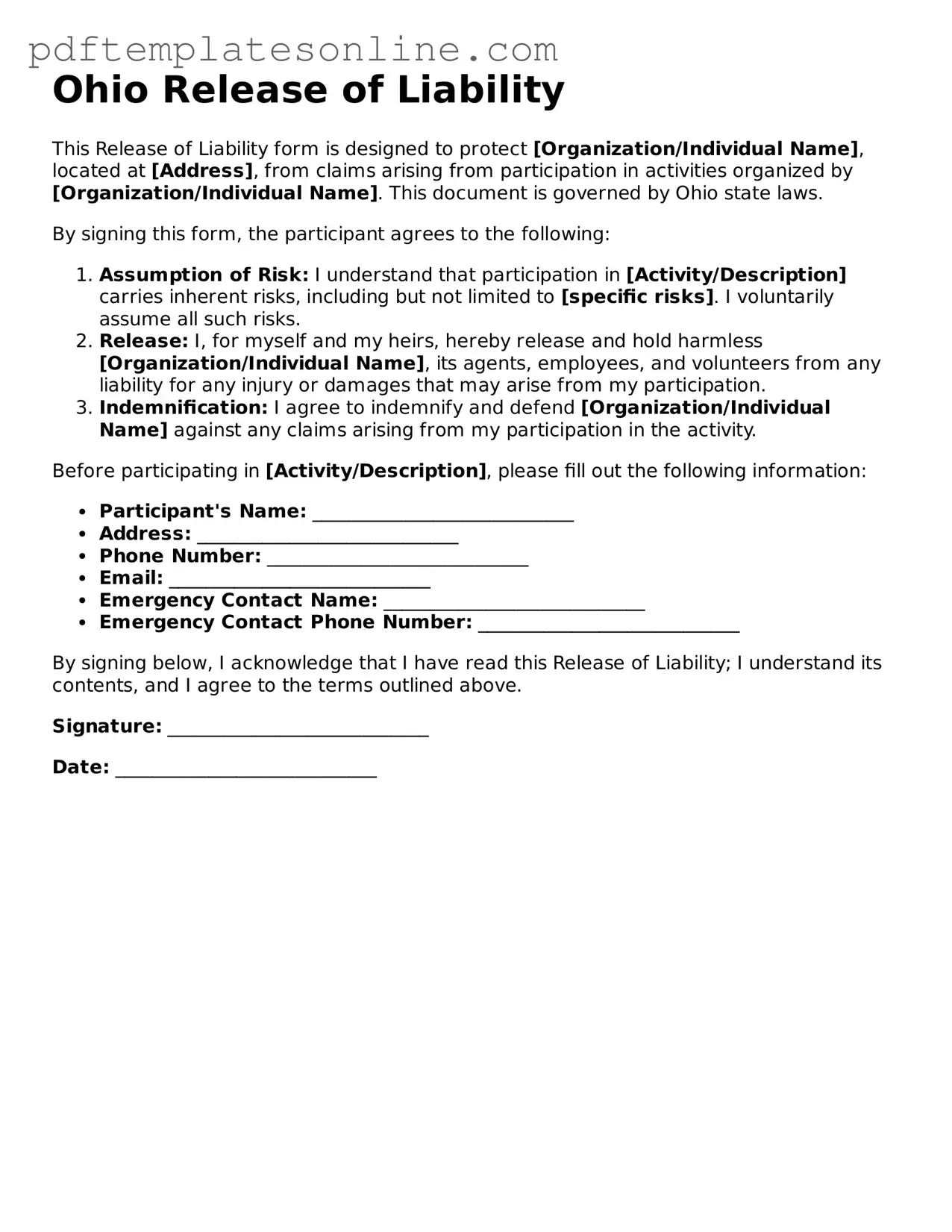Filling out the Ohio Release of Liability form can seem straightforward, but many people make common mistakes that can lead to complications later on. One significant error is not reading the entire document thoroughly. This form contains important information that outlines the rights being waived. Skipping sections can result in misunderstandings about what is being agreed to.
Another frequent mistake is failing to provide accurate personal information. This includes names, addresses, and contact details. If the information is incorrect or incomplete, it can create issues if a claim needs to be processed later. Always double-check the details before submitting the form.
People often overlook the importance of signatures. Some individuals forget to sign the document altogether, while others may sign in the wrong place. Each signature must be clear and placed where indicated. A missing or misplaced signature can invalidate the release.
Additionally, many individuals do not date the form. Including a date is essential because it establishes when the agreement was made. Without a date, it may be difficult to enforce the terms of the release in the future.
Some people assume that they can fill out the form on behalf of someone else without proper authorization. This can lead to legal issues, especially if the person being represented did not consent to the terms. Always ensure that the individual signing the form is doing so willingly and understands the implications.
Another common oversight is neglecting to review the terms and conditions associated with the release. Many fail to grasp what risks they are waiving. Understanding these terms is crucial for making an informed decision.
People sometimes forget to consult with a legal expert before signing. While it may seem unnecessary, having a professional review the form can help clarify any confusing language and ensure that the rights being waived are fully understood.
Lastly, individuals often submit the form without making copies. Keeping a copy for personal records is vital. It serves as proof of the agreement and can be referenced in case of disputes. Without a copy, it becomes challenging to verify what was agreed upon.
